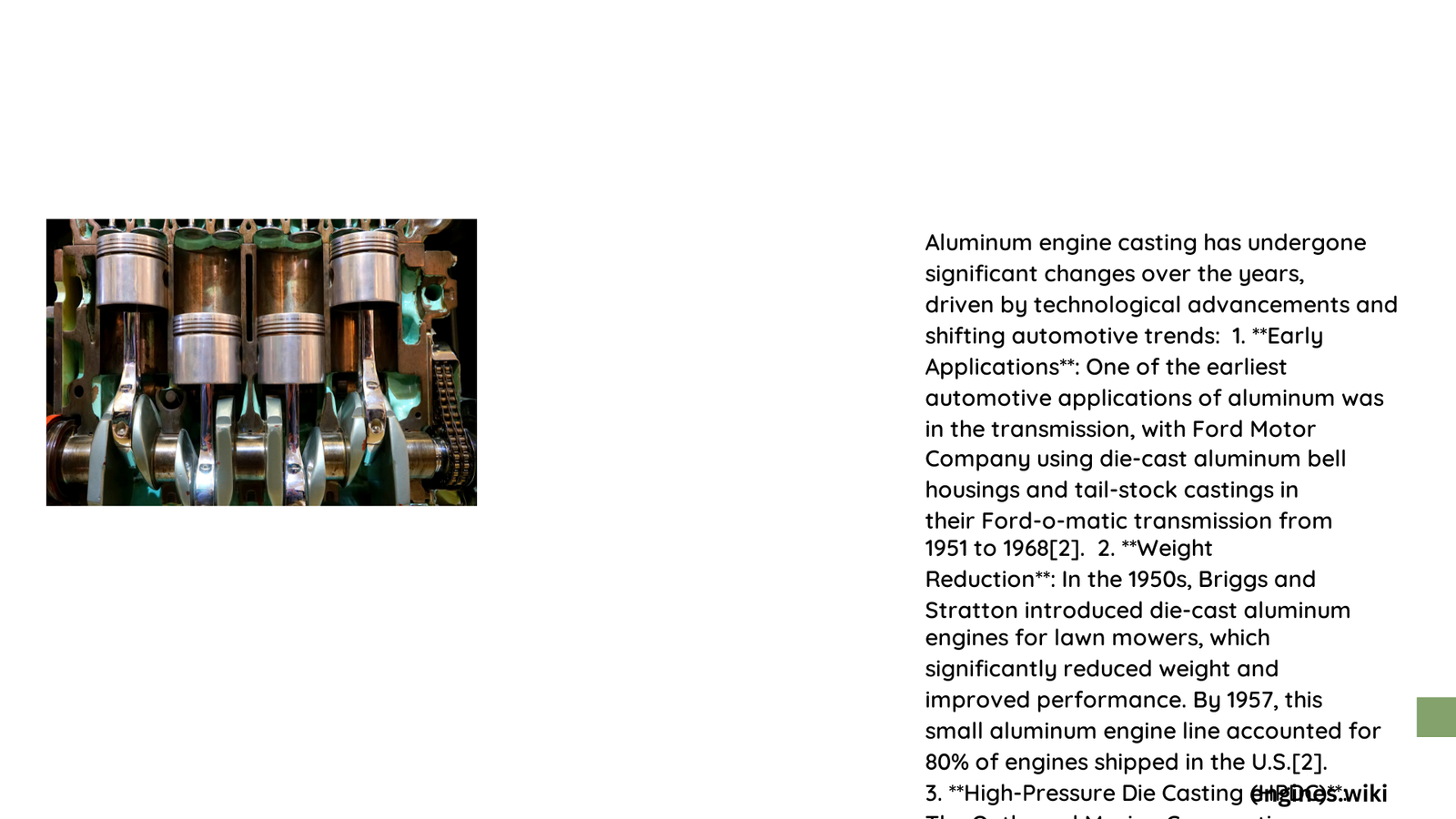Aluminum engine casting has undergone a remarkable transformation, evolving from rudimentary manufacturing techniques to sophisticated, precision-driven processes. Modern technologies like high-pressure die casting, 3D printed sand additive manufacturing, and advanced simulation software have dramatically reshaped how engine blocks are designed, produced, and optimized for performance, weight reduction, and cost-effectiveness.
What Drove the Initial Transformation of Aluminum Engine Casting?
The automotive industry’s persistent demand for lightweight, high-performance engines catalyzed significant changes in aluminum casting technologies. Traditional cast iron engine blocks were heavy, inefficient, and limited in design complexity. Manufacturers sought alternatives that could deliver:
- Reduced Vehicle Weight
- Enhanced Thermal Performance
- Improved Fuel Efficiency
- Complex Geometric Designs
How Did Manufacturing Processes Evolve?
High-Pressure Die Casting Innovations
High-pressure die casting emerged as a game-changing technique, introducing unprecedented precision and repeatability. Key advancements included:
- Advanced tooling and mold designs
- Integrated sensor technologies
- Real-time process monitoring systems
- Sophisticated simulation software
| Technology | Performance Impact | Cost Efficiency |
|---|---|---|
| Traditional Casting | Low | High |
| High-Pressure Die Casting | High | Moderate |
| 3D Printed Sand Casting | Very High | Low Initial, High Long-Term |
What Role Did Material Science Play?
Aluminum alloy compositions underwent significant refinement, enabling:
- Superior Strength-to-Weight Ratios
- Enhanced Thermal Conductivity
- Improved Corrosion Resistance
- Greater Structural Integrity
How Did Design Methodologies Transform?
Computer-aided design (CAD) and advanced simulation tools revolutionized engine block development:
- Precise thermal flow analysis
- Stress distribution modeling
- Virtual prototyping
- Reduced physical testing requirements
What Were the Key Technological Breakthroughs?

3D Printed Sand Additive Manufacturing
This technology eliminated traditional tooling constraints, allowing:
- Complex core shape creation
- Thin-wall lightweight designs
- Reduced manufacturing lead times
- Greater than 60% mass reduction compared to cast iron blocks
Electromagnetic Pump Low-Pressure Casting
Innovative techniques introduced:
- Reduced human error
- Improved surface finish
- Enhanced casting properties
- Software-controlled precision manufacturing
What Performance Benefits Emerged?
Aluminum engine casting advancements delivered remarkable improvements:
- Weight Reduction: Lighter vehicles requiring less energy
- Thermal Management: Superior heat dissipation
- Fuel Efficiency: Improved overall vehicle performance
- Structural Reliability: Tighter manufacturing tolerances
Economic and Environmental Implications
Modern aluminum casting processes offer:
- Lower production costs
- Reduced material waste
- Recyclable material usage
- Alignment with sustainability regulations
Cost-Effectiveness Metrics
- Tooling cost savings: Hundreds of thousands of dollars
- Production efficiency: Higher volume with consistent quality
- Recyclability: Reduced environmental impact
Future Trajectory
Emerging technologies like artificial intelligence, machine learning, and advanced materials science promise continued evolution in aluminum engine casting, focusing on:
- Ultra-lightweight designs
- Enhanced performance characteristics
- Sustainable manufacturing processes
References:
– Market Research Intellect
– Casting Source
– Auto Cast Inc
